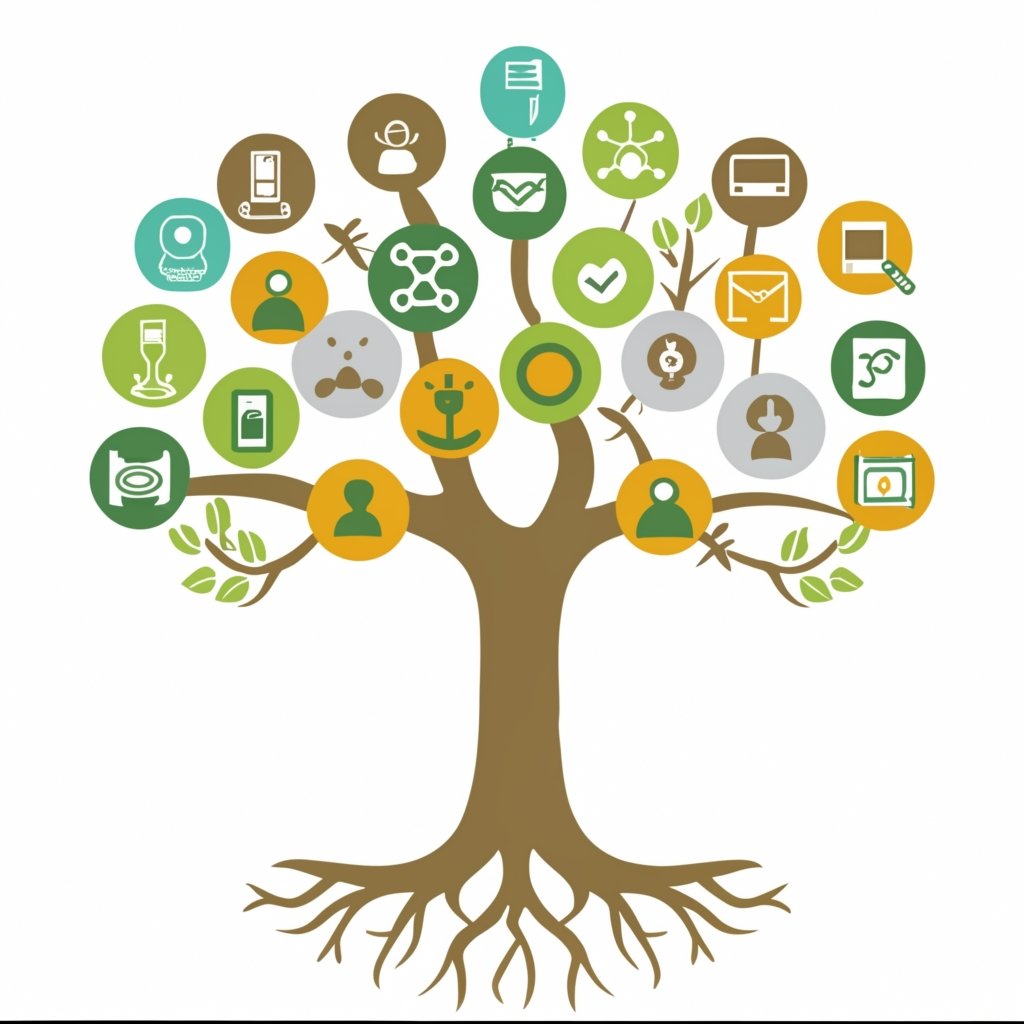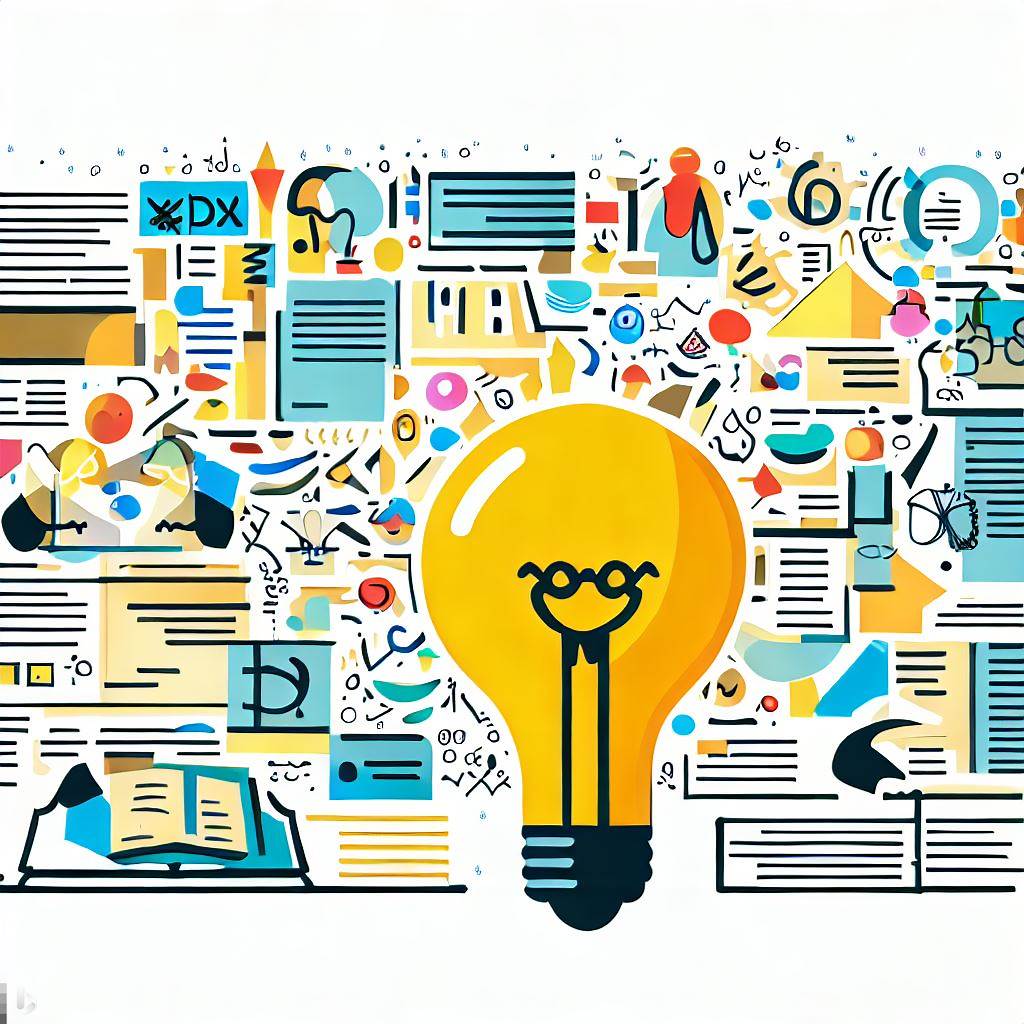More on this in our Series on Innovation Basics

What Defines Product Innovation?
In the ever-evolving landscape of business, product innovation stands as a crucial pillar, defining the trajectory of companies and shaping industries. This dynamic concept goes beyond mere product development; it encapsulates the essence of creative evolution in response to market demands and technological advancements.
The Significance of Product Innovation
Why do businesses invest in product innovation? The answer lies in the pursuit of sustained relevance, growth, and competitiveness. In a world where consumer preferences shift rapidly and technology reshapes the playing field, stagnant products risk obsolescence. Product innovation is the compass guiding businesses through the turbulent seas of change, enabling them to not only survive but thrive.
Innovation isn’t a luxury; it’s a necessity. A stagnant product line spells doom in a market where dynamism is the norm. Continuous improvement and adaptation are the keys to staying ahead, and product innovation is the engine driving this forward momentum.
Examples of Successful Implementation
How have companies successfully implemented product innovation, and what impact did it have on their market position? Let’s delve into some illustrative examples:
Apple Inc.: Pioneering Technological Elegance
Apple stands as a paragon of product innovation, consistently redefining consumer electronics. From the groundbreaking iPod to the game-changing iPhone, Apple’s commitment to pushing technological boundaries has not only captured market share but has created a devoted global fan base. The seamless integration of hardware and software, coupled with intuitive design, has been the hallmark of Apple’s success.
How Apple Is Organized for Innovation: A quick summary
Tesla: Transforming Transportation
In the automotive industry, Tesla’s innovative approach has disrupted traditional norms. Electric vehicles were not a novel concept, but Tesla revolutionized the market by making them desirable, high-performing, and technologically advanced. The company’s commitment to sustainable innovation not only propelled it to the forefront of the electric vehicle market but also influenced the entire automotive industry’s direction.
Airbnb: Redefining Hospitality
Airbnb transformed the hospitality sector by introducing a platform that allows individuals to rent out their homes. This innovative business model disrupted the traditional hotel industry, offering consumers more options and a personalized experience. Through this innovative approach, Airbnb not only carved out a niche for itself but also forced traditional players to reassess and adapt their strategies.
Conclusion
Innovation managers play a pivotal role in orchestrating the symphony of creativity within a company. They must foster a culture that embraces change, encouraging teams to think beyond the conventional and envision the future. As we navigate the complexities of the business world, one thing remains clear: product innovation isn’t just about what you create; it’s about how you stay relevant, resilient, and ahead of the curve. Embracing this mindset is not just a strategic choice; it’s the lifeline that ensures a company’s journey from surviving to thriving.
Why is Continuous Product Innovation Necessary?
In the fast-paced realm of business, continuous product innovation isn’t a luxury but a strategic imperative. As an innovation manager, understanding the why behind this perpetual need is paramount for steering your company towards sustained long-term success.
Unveiling the Imperative
Why is continuous product innovation necessary? The answer lies in the very fabric of market dynamics and the ever-shifting tapestry of consumer preferences. The modern consumer is not just a buyer; they are an active participant in the market narrative. Their preferences are dynamic, influenced by technological trends, cultural shifts, and a constant influx of new information. To meet and exceed these expectations, companies must evolve alongside their consumers.
Addressing Market Dynamics
Market dynamics, characterized by fierce competition and rapid technological advancements, necessitate a proactive stance. Standing still is not an option. Continuous product innovation serves as the compass, guiding companies through the turbulent seas of market forces. It’s the difference between being a market leader and being left behind.
Changing Consumer Preferences
Consumer preferences are a moving target. What captures their attention today may become obsolete tomorrow. Continuous product innovation is the strategic response to this ever-shifting landscape. It’s about not only meeting current expectations but anticipating and exceeding future ones. The companies that thrive are those that understand that consumer loyalty is earned through consistent evolution, not complacency.
Strategies for Sustaining Innovation
How can companies maintain a culture of continuous product innovation? Let’s delve into effective strategies and compelling case studies that illuminate the path forward.
Agile Development Methodology
Embracing agile development methodologies allows companies to respond swiftly to changing market demands. This iterative approach, with its emphasis on collaboration and adaptability, enables teams to incorporate feedback rapidly, ensuring that products stay aligned with evolving customer needs.
Amazon: The Power of Customer Centricity
Amazon’s success is a testament to the power of putting the customer at the center of innovation. Constantly listening to customer feedback, analyzing data, and swiftly implementing changes have been integral to Amazon’s ability to not only stay relevant but to set industry standards.
Google’s 20% Time
Google’s innovative culture is fueled by its “20% time” policy, where employees dedicate a portion of their work hours to pursue passion projects. This freedom to explore and innovate has led to the creation of iconic products like Gmail and Google News, showcasing the potential of giving employees room for creative exploration.
How Does User-Centered Design Drive Product Innovation?
As an innovation manager navigating the intricate landscape of product development, understanding the pivotal role of user-centered design is paramount. In this exploration, we unravel the essence of user-centricity and its profound connection to driving innovation.
Defining User-Centered Design
What is user-centered design? At its core, it’s a philosophy that places the end user at the heart of the innovation process. It involves understanding the needs, preferences, and pain points of the user demographic and crafting products that not only meet but exceed their expectations. It’s a shift from dictating what users should want to understanding what they truly need.
The Impact of User-Centered Design on Innovation
Why does considering user needs drive product innovation? The answer lies in the transformative impact it has on the entire product lifecycle. By prioritizing user satisfaction and usability, companies not only enhance the end product but also create a more efficient and effective innovation process.
Methodologies and Practices of User-Centered Design
How can innovation managers integrate user-centered design into their processes? Let’s delve into methodologies and practices that have proven instrumental in marrying user needs with product innovation.
Persona Development
Creating user personas involves constructing detailed profiles of your target audience. These personas encapsulate demographic information, behaviors, and goals, providing a holistic understanding of the end user. This human-centered approach guides decision-making throughout the product development journey.
Iterative Prototyping
User-centered design thrives on iteration. Building prototypes and gathering user feedback in a continuous loop allows for refinement based on real-world user experiences. This iterative process not only enhances the final product but also reduces the risk of developing solutions that miss the mark.
User Testing
Incorporating user testing at various stages of development is a linchpin of user-centered design. It involves putting prototypes or early versions of the product in the hands of actual users and collecting feedback. This direct interaction provides invaluable insights, uncovering nuances that might be overlooked in internal assessments.
Examples of User-Centered Design Triumphs
Let’s explore products that have flourished due to a steadfast commitment to user satisfaction:
Apple’s iPhone: Intuitive Simplicity
The iPhone’s success is rooted in its user-friendly interface and seamless user experience. Apple’s meticulous attention to user needs, from the initial touch-screen design to the intuitive app ecosystem, has set a standard for smartphones globally.
Airbnb: Tailoring Experiences
Airbnb’s platform is a testament to the power of understanding user needs. By focusing on user-generated content, intuitive booking processes, and personalized recommendations, Airbnb has redefined the hospitality experience, resonating with users seeking unique and tailored stays.
Google Search: Streamlining Information Retrieval
Google’s minimalist design and emphasis on speed and relevance in search results exemplify user-centered design. By prioritizing the user’s need for quick and accurate information retrieval, Google has become synonymous with online search.
Conclusion
In the realm of innovation management, the adoption of user-centered design is not just a trend; it’s a strategic imperative. By understanding, empathizing, and designing for the end user, innovation managers can propel their products beyond mere functionality to resonate on a profound level. In a landscape where user satisfaction is the ultimate litmus test for success, user-centered design isn’t just a methodology; it’s the driving force behind meaningful and impactful product innovation.
Exploring the Role of Technology in Modern Product Innovation
In the dynamic landscape of modern product development, the symbiotic relationship between technology and product innovation is more crucial than ever. Let’s embark on an exploration of how cutting-edge technologies are not just shaping but accelerating the trajectory of innovation.
The Crucial Role of Technology
Why is technology indispensable in the product development process? It’s not just a tool; it’s the catalyst that propels innovation forward. Technology serves as the backbone, influencing every facet of product ideation, creation, and delivery. Understanding this intersection is key to navigating the complexities of the innovation landscape.
Shaping the Product Development Process
In the quest for groundbreaking product innovations, emerging technologies are pivotal. Let’s delve into some key players in this transformative landscape:
Artificial Intelligence (AI)
AI is revolutionizing how products are conceptualized and brought to life. From predictive analytics shaping market insights to machine learning optimizing design processes, AI is a driving force in creating products that are not just intelligent but adaptive.
Internet of Things (IoT)
The interconnectedness enabled by IoT has transcended novelty to become a cornerstone of innovation. Smart products, driven by real-time data and connectivity, redefine user experiences. Whether it’s a smart home device or an industrial sensor, IoT fuels products that are not just responsive but anticipatory.
Blockchain
In the realm of security and transparency, blockchain is a game-changer. Products leveraging blockchain technology offer unparalleled trust and traceability. From supply chain management to ensuring data integrity, blockchain contributes to products that redefine standards of reliability.
Groundbreaking Innovations in Action
Let’s spotlight examples where the synergy of technology and innovation has birthed transformative products:
Tesla’s Autopilot: AI in Automotive
Tesla’s Autopilot system is a testament to the power of AI in redefining transportation. By integrating machine learning algorithms with sensor data, Tesla created a self-driving feature that continually evolves and adapts, showcasing the potential of AI in the automotive industry.
Smart Thermostats: IoT in Home Comfort
Products like Nest Learning Thermostat exemplify the impact of IoT. By learning user preferences and adapting to changing conditions, these smart thermostats not only enhance comfort but also contribute to energy efficiency, showcasing the tangible benefits of IoT in daily life.
IBM Food Trust: Blockchain in Supply Chain
IBM Food Trust utilizes blockchain to revolutionize the food supply chain. By providing a transparent and traceable ledger, it ensures the authenticity of food products, addressing concerns related to safety and provenance. This application of blockchain exemplifies its potential in ensuring product integrity.
Challenges and Opportunities
The integration of these technologies is not without challenges. From ethical considerations to technical complexities, innovation managers must navigate a terrain fraught with both pitfalls and possibilities. The key lies in embracing these challenges as opportunities for growth and refinement.
Opportunity: Rapid Prototyping and Iteration Challenge: Ethical Implications and Privacy Concerns
In an era where time is of the essence, technologies like 3D printing enable rapid prototyping, accelerating the iteration process. However, this speed must be balanced with a meticulous consideration of ethical implications, particularly concerning user privacy and data security.
Opportunity: Enhanced User Experiences Challenge: Technical Compatibility and Integration
Technologies like augmented reality (AR) offer immersive user experiences. The challenge lies in ensuring seamless integration with existing systems and platforms. Compatibility becomes paramount to avoid disjointed user interactions.
About the authors
Dr. Alan Mitchell is a leading expert in innovation strategy, as a guest writer for our upcoming Innovation Strategy Series. With his extensive experience and practical insights, Dr. Mitchell will provide valuable guidance and thought-provoking content. Stay tuned for his expert insights as we explore the dynamic world of innovation strategy together.







